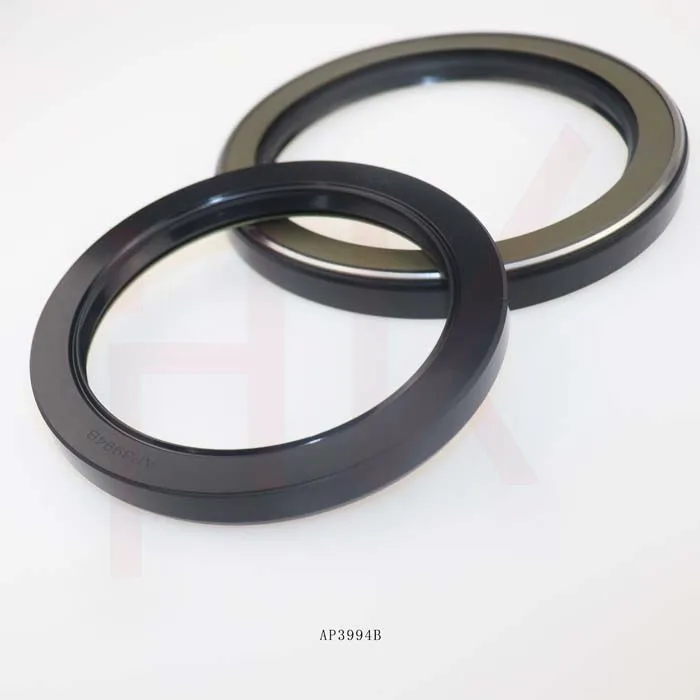Oct . 09, 2024 10:35 Back to list
oil seal for motor
Understanding Oil Seals for Motors A Comprehensive Overview
Oil seals, also known as shaft seals or radial lip seals, play a crucial role in ensuring the efficient operation of motors. These small yet vital components are designed to retain lubrication within the motor while preventing the ingress of contaminants. The design and functionality of oil seals are fundamental to the longevity and performance of various types of motors across different applications.
What is an Oil Seal?
An oil seal is a device that is used to seal the interface between stationary and rotating parts in machinery. Typically made from rubber or synthetic materials, oil seals are engineered to withstand the mechanical stresses and environmental conditions present in motor operations. Their main function is to maintain the lubrication of the moving parts by containing oil and thereby reducing friction, wear, and heat generation.
Types of Oil Seals
There are several types of oil seals, each designed for specific applications and requirements
1. Radial Lip Seals This is the most common type of oil seal and consists of a flexible lip that contacts the shaft. The design allows for a tight fit, keeping oil in and preventing dirt and moisture from entering.
2. Flat Seals Primarily used in applications with limited axial movement, flat seals provide a simple sealing solution. They do not have a lip but instead rely on a compressive force to maintain a seal.
3. Secondary Seals These seals are often used in conjunction with primary seals for enhanced protection against contaminants. They generally employ a more complex design to provide additional sealing performance.
4. PTFE Seals Polytetrafluoroethylene (PTFE) seals are used in high-temperature applications due to their excellent heat resistance. They are less affected by chemical exposure compared to rubber seals.
Installation and Maintenance
Proper installation of oil seals is critical to their performance. Incorrect installation can lead to premature failure and leakage. Here are some essential steps to consider during installation
- Surface Preparation Ensure that the surfaces where the seal will be mounted are clean, free from burrs, and adequately lubricated to avoid damaging the seal during installation.
- Alignment The seal must be installed straight and aligned with the shaft to avoid unnecessary wear and failure.
- Use of Proper Tools Special tools such as seal drivers may be necessary to install the seal without causing damage.
oil seal for motor

Maintaining oil seals is also essential for the longevity of motors. Regular inspections for signs of wear, leakage, or damage can help identify issues early. Replacing oil seals at the first sign of tearing or degradation is vital to prevent larger mechanical failures in motors.
Benefits of Using Quality Oil Seals
Investing in quality oil seals provides several benefits
- Increased Efficiency Tight seals reduce oil leakage and ensure optimal lubrication, leading to improved motor efficiency.
- Extended Equipment Life By preventing the entry of dirt and contaminants, oil seals contribute to the longevity of motor components.
- Reduced Downtime Well-functioning seals minimize the chances of motor failure, reducing maintenance costs and downtime associated with repairs.
- Improved Performance Efficient sealing leads to better performance metrics, such as power output and energy consumption.
Applications of Oil Seals in Motors
Oil seals find wide applications in various types of motors, including
- Electric Motors Used in industrial machinery, automotive applications, and household appliances, oil seals are essential for maintaining lubrication and preventing contamination.
- Internal Combustion Engines In engines, oil seals are vital components that prevent oil leaks and protect the engine from contaminants.
- Hydraulic Systems Oil seals help maintain hydraulic fluid integrity, ensuring that hydraulic motors function efficiently.
Conclusion
In summary, oil seals are an integral component of motor systems that ensures longevity, efficiency, and optimal performance. By understanding their types, installation procedures, and maintenance requirements, users can greatly enhance the reliability of motors in various applications. Prioritizing quality and and precise installation practices will result in a more efficient operation and reduced costs associated with repairs and maintenance. As technologies evolve, the importance of oil seals in ensuring mechanical integrity and performance in motors will continue to be paramount.
-
TCN Oil Seal Metal Ring Reinforcement for Heavy Machinery
NewsJul.25,2025
-
Rotary Lip Seal Spring-Loaded Design for High-Speed Applications
NewsJul.25,2025
-
Hydraulic Cylinder Seals Polyurethane Material for High-Impact Jobs
NewsJul.25,2025
-
High Pressure Oil Seal Polyurethane Coating Wear Resistance
NewsJul.25,2025
-
Dust Proof Seal Double Lip Design for Construction Equipment
NewsJul.25,2025
-
Hub Seal Polyurethane Wear Resistance in Agricultural Vehicles
NewsJul.25,2025
-
The Trans-formative Journey of Wheel Hub Oil Seals
NewsJun.06,2025
Products categories
















